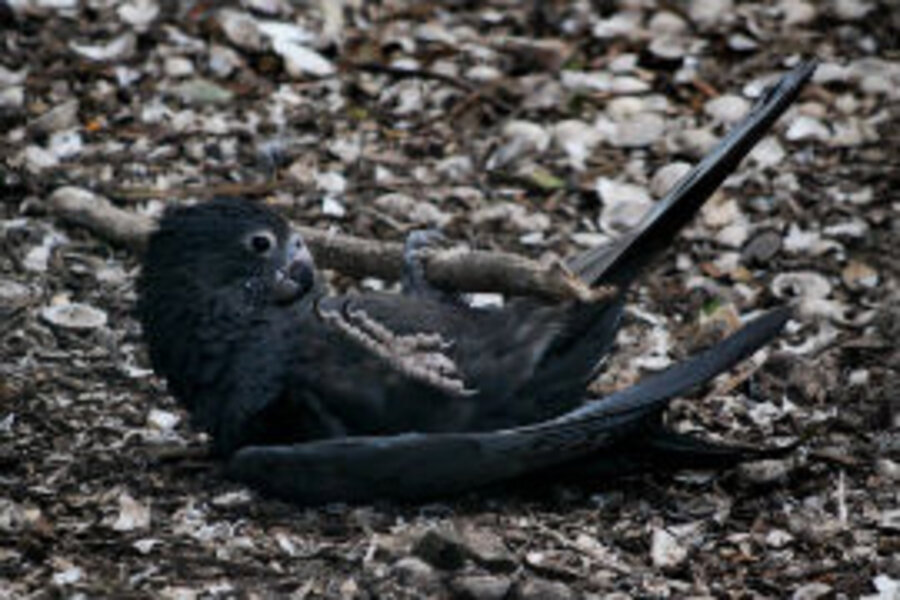Parrots use tools and aren't afraid to share, study shows
Loading...
Maybe humans did not invent the mortar and pestle.
Parrots at an aviary at the University of York, in England, have been observed using small pebbles and date pits to grind up calcium deposits found in shells to eat. It is the first observation of such activity by Greater vasa parrots (Coracopsis vasa), and is the first evidence of tools used for grinding by a species other than humans. The study, published Wednesday by The Royal Society, also says the parrots demonstrate one of few known instances of animals sharing tools "directly."
The revelation was caught by chance, when Megan Lambert, the study's lead author and a PhD student of psychology at the University of York, and her colleagues were observing 10 captive Greater vasa parrots in aviaries with floors covered in cockleshells, soil, wood chips, and pebbles.
"[We] noticed they were interacting quite a bit with objects from the floor of their aviary," Ms. Lambert told Live Science. "So we took a closer look and that’s when we found they were actually using tools."
From that initial observation, the team of three watched and filmed the downy black birds for eight months, from March to October, paying particular attention to their use of cockle shells, which are a source of calcium for birds, and particularly important during egg-laying season in March, according to the researchers.
Just before the breeding season – from March to mid-April – they found the parrots most actively using their pebbles and date pits to grind for calcium. According to a statement from the University of York:
This may be due to calcium supplementation being critical for egg-laying. Researchers were therefore initially surprised to find that it was the males, not the females who showed the greatest interest in shells.
However, observation of the parrots’ breeding behaviour showed that males often engaged in regurgitative feeding of females before copulating with them, thus potentially passing on the calcium benefits.
According to Lambert, the observed phenomenon only raises more questions: What caused the birds to pick up a pebble? Why do they share? She said in a statement that the use of tools "could reflect an innate predisposition in the parrots" or it may just "be the result of individual trial and error" or the result of the birds learning by all being socialized a certain way.
"Whether these birds also use tools in the wild remains to be explored," she said. "Ultimately these observations highlight the greater vasa parrot as a species of interest.”






